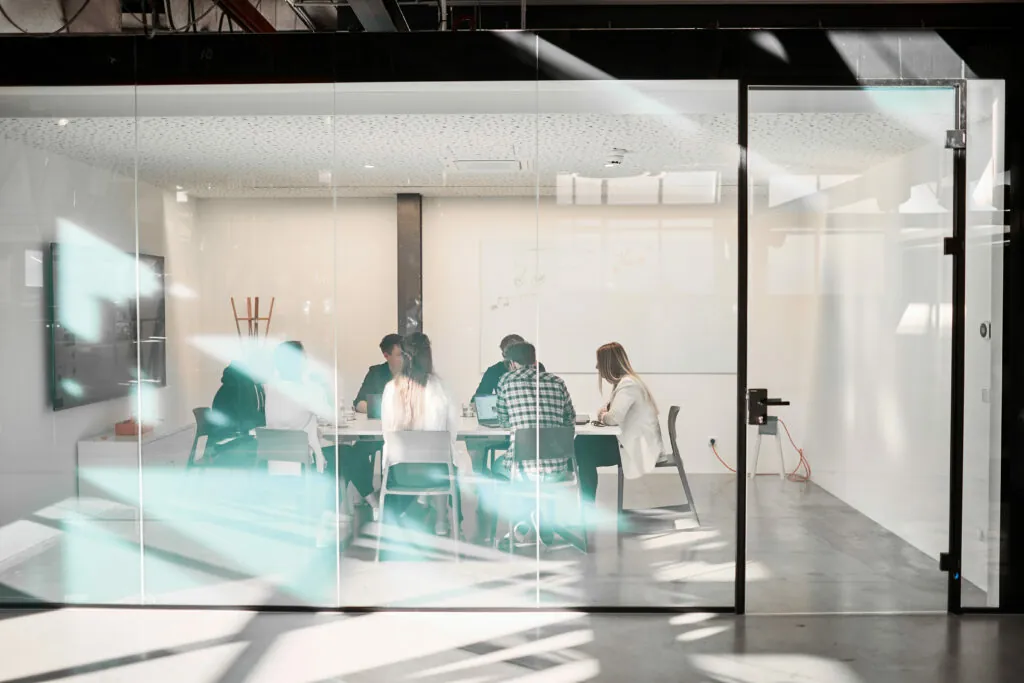It’s all about organization: Why composable commerce projects fail
March 8, 2024

March 8, 2024

Composability promises to be the solution to many challenges in the e-commerce and digital industry. However, those who aim for a MACH architecture and want to be successful with the concept of composable commerce need more than a modular tech stack. In our five-part series, experts shed light on the potential and often overlooked hurdles of composable commerce projects from a business, user and technology perspective.
Part 1: From buzzword to business strategy
Part 3: QA for long-term composable commerce success
In the second edition, you will learn why companies fail on the way to composable business and why traditional digital agencies do not offer satisfactory solutions.
Companies that aim for a MACH architecture and want to set themselves up composable usually have one thing in common: They are dissatisfied with the old world of their online business. The sluggishness of monolithic legacy systems leads to inefficient processes, hampers innovation, and stands in the way of both technical and business development.
The causes of this situation and dissatisfaction are complex:
Historically grown architecture
E-commerce often starts as a side project, from which an unclear system landscape grows over the years. Due to the increasing complexity of the architecture and staff turnover in the company, the overall view is missing.
Lack of strategy
Especially at the beginning, new requirements are implemented without fully thinking them through, particularly to their conclusion. The existing system is repeatedly adapted at individual points, without following a holistic strategy with a clear objective.
Wrong prioritization of requirements
Requirements are dumped from different hierarchical levels and often not sensibly prioritized. Since higher positions in the company can usually push their ideas through more quickly, only what currently has the “loudest voice” gets implemented.
Dependencies within the teams
Strong dependencies within teams slow down sustainable developments and innovations: one hand waits for the other’s input. From idea to feature deployment, it often takes a very long time.
Unclear task distribution
Unclear roles and task profiles in the development cycle complicate coordination and smooth processes. Due to a lack of coordination, dev teams repeatedly run into dead ends when implementing new functions and tools. Thus, it is hardly possible to develop a long-term strategy apart from day-to-day business.
Time-intensive maintenance
Updates, new functions, and minor adjustments in different areas constantly create new construction sites that affect adjacent systems. Extensive maintenance tasks are time-consuming, can bring temporary failures, and affect performance.
No framework for tests
“Just give it a try” is almost impossible with a rigid monolithic architecture. The conception, development, and testing of new services and features quickly take on the character of a separate project. All too often, it remains merely an idea to avoid partly difficult-to-calculate efforts.
For these operational and strategic challenges, Composable Commerce based on MACH (Microservices, APIs, Cloud-native, Headless) seems to offer a universal solution: A modular tech stack acts as an enabler to continuously create value-adding services along digital touchpoints, promising maximum flexibility, speed, and efficiency.
However, in the implementation, many companies fall into the trap of not considering the gained adaptability at a crucial point: The team that will operate, shape, and advance the flexible system landscape.
To gain more speed via a MACH architecture, achieve measurable efficiency effects, and become more agile overall, not least the organization and internal processes must be adapted – starting with the strategic planning of digital initiatives, development and QA, release and rollout management to marketing, analysis, and controlling.
But how do you succeed in setting up your own organization composable-ready?
Composable commerce is based on a concept of overall entrepreneurial adaptability – and thus a completely new way of working and thinking. The following prerequisites should be created:
1. End-to-end approach
Just like the new systems, the organizational restructuring must also be thought of end-to-end – from the objective to the success measurement and controlling. This end-to-end approach sets the course in strategic planning to challenge new requirements again and again. At the same time, it is important to promote collaboration between technical and professional experts.
2. Continuous learning and improving
Since a MACH architecture is based on the basic idea of continuous improvement and adaptation, a corresponding culture should be promoted. Only through continuous learning and improving is it possible to keep up with the constantly changing requirements of the market and technology and to drive innovations.
3. Dedicated, interdisciplinary teams
Instead of a large, immovable developer team, smaller, cross-functional teams operate in a MACH-oriented organization. They work as independently as possible, but always considering overall architectural guidelines. For example, domain-driven design principles can be applied to define the structure and organization of services in a MACH architecture. With clear contexts and models, teams can work more effectively and better understand interactions between services.
This structure also means moving away from the idea that everyone is responsible for everything. By assigning clear responsibilities for individual subject areas, teams can advance and develop their product components much more focused. The organization becomes an enabler for speed and ownership.
4. Overarching orchestration and agile processes
A purposeful coordination of all projects of the individual teams is not possible without central control. An overarching orchestration of the individual specialist teams via agile program management is mandatory to ensure smooth processes even for larger, cross-impact requirements with project character. Connecting key positions maintain the overall view and make business-oriented decisions based on data.
5. Change management and tech-enablement
Last but not least, effective change management is required to support employees in building a deep understanding of the chosen technologies and architectural principles and adapting to new processes and tools. This primarily includes targeted training of employees. Additionally hired specialists can close possible knowledge gaps. Cooperation with external service providers is recommended to support the internal teams in a ramp-up phase.
Those who turn to a traditional digital agency with the desire to implement a MACH architecture and thus enable a Composable Business run the risk that the planning and implementation will bypass the internal organization. The focus of most agencies is on the technical basis in the form of interchangeable system and software components. However, there is a lack of expertise and experience for the anticipatory design of business processes, the planning of competencies, and the establishment of agile, interdisciplinary teams.
For your composable commerce project to be successful in the long term, you need the right partners for process optimization and the establishment of a composable-capable organization.


Your contact person
Dr. Philipp Hoberg
Head of digital business consulting
valantic CEC Deutschland GmbH
+49 157 80698214
Don't miss a thing.
Subscribe to our latest blog articles.